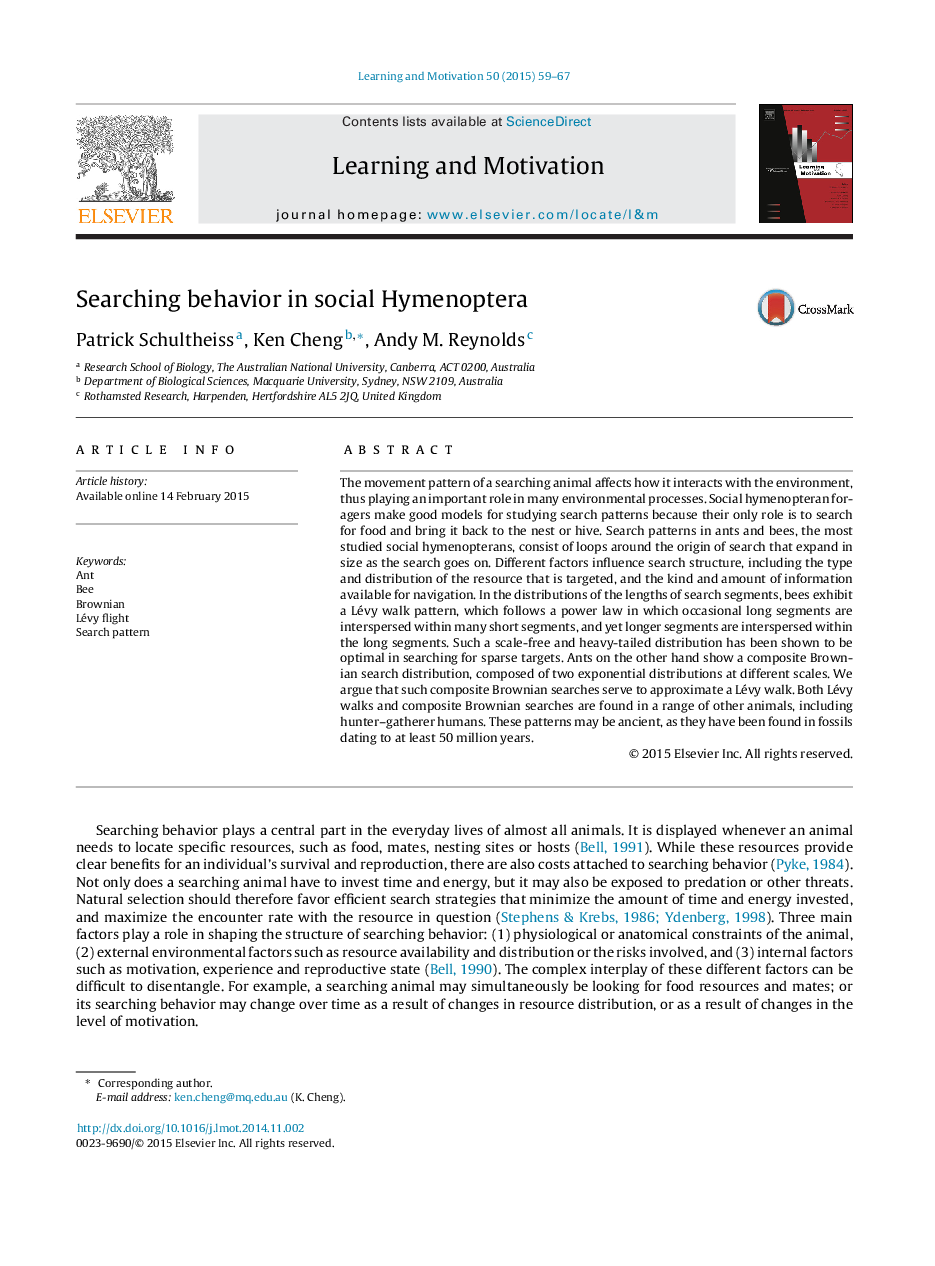| کد مقاله | کد نشریه | سال انتشار | مقاله انگلیسی | نسخه تمام متن |
|---|---|---|---|---|
| 918915 | 1473518 | 2015 | 9 صفحه PDF | دانلود رایگان |

The movement pattern of a searching animal affects how it interacts with the environment, thus playing an important role in many environmental processes. Social hymenopteran foragers make good models for studying search patterns because their only role is to search for food and bring it back to the nest or hive. Search patterns in ants and bees, the most studied social hymenopterans, consist of loops around the origin of search that expand in size as the search goes on. Different factors influence search structure, including the type and distribution of the resource that is targeted, and the kind and amount of information available for navigation. In the distributions of the lengths of search segments, bees exhibit a Lévy walk pattern, which follows a power law in which occasional long segments are interspersed within many short segments, and yet longer segments are interspersed within the long segments. Such a scale-free and heavy-tailed distribution has been shown to be optimal in searching for sparse targets. Ants on the other hand show a composite Brownian search distribution, composed of two exponential distributions at different scales. We argue that such composite Brownian searches serve to approximate a Lévy walk. Both Lévy walks and composite Brownian searches are found in a range of other animals, including hunter–gatherer humans. These patterns may be ancient, as they have been found in fossils dating to at least 50 million years.
Journal: Learning and Motivation - Volume 50, May 2015, Pages 59–67